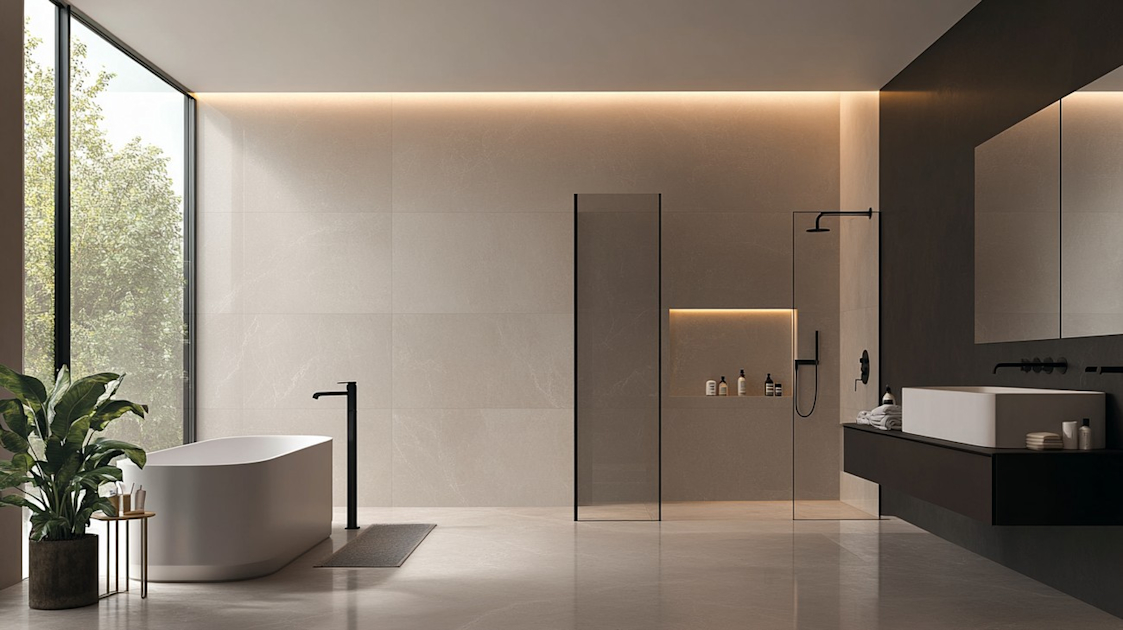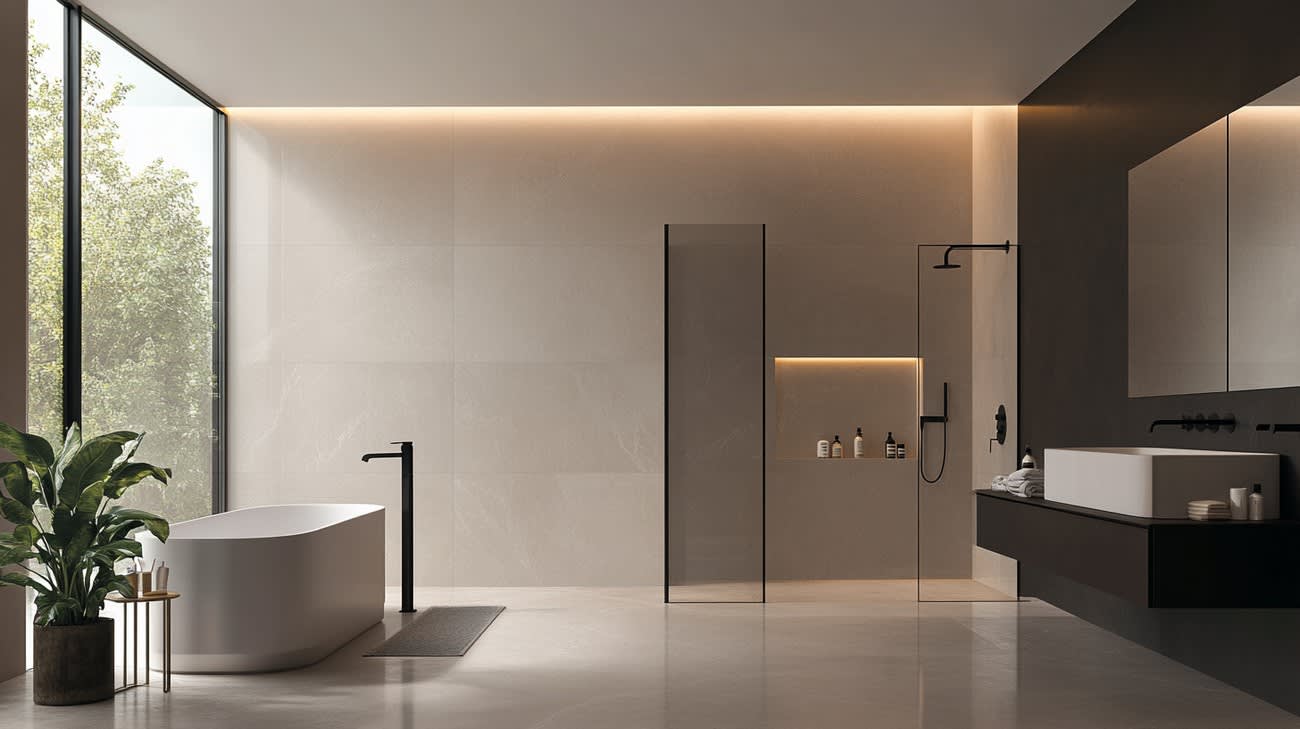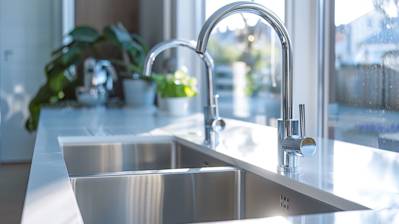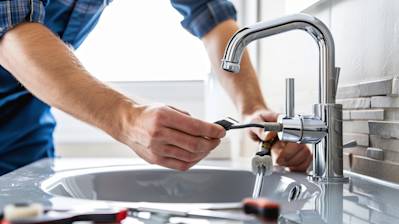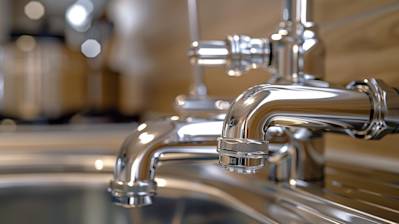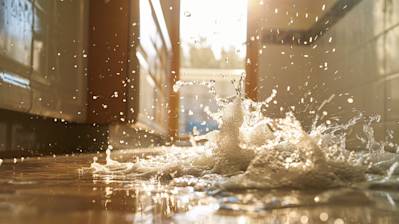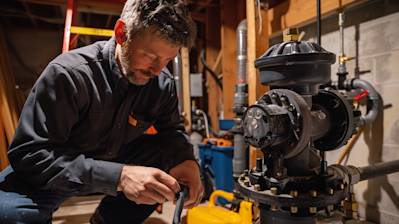A functional and effective bathroom does not necessarily mean having a bulk of space or an array of high-end fixtures. Most of the time, it’s all about smart use and placement of the right accessories. One such functional bathroom accessory is a Shower Diverter. To many, a shower diverter might not ring a bell, but rest assured it plays a vital role in keeping your shower experience hassle-free.
This comprehensive guide on shower diverters will walk you through everything you need to know about this underrated bathroom accessory, including what it is, the different types, how it works, and how to maintain it.
Unraveling the Shower Diverter Mystery
A common question is, What is a shower diverter? Shower diverters are integral plumbing parts that direct water flow from the bathtub faucet to the showerhead, and vice versa. They come across as sleek knobs attached to a bathtub or bathroom wall, acting as a valve to control water direction.
Whether it's an exhilarating cold shower or a soothing hot bath, a shower diverter makes it possible to switch between the two in an instant. Remember, these handy little devices play a crucial role in averting water wastage, making them environmentally friendly.
A Deep Dive Into Types of Shower Diverters
Bathroom spaces are as varied as the people using them. Below is a rundown of the different types of shower diverters that cater to different bathroom layouts and preferences:
Three-Valve Diverters Three-valve diverters are often found in-between two taps in a two-tap system. Each tap independently controls hot and cold water while the diverter in the middle selects output between the tub and the shower.
Two-Valve Diverters A two-valve diverter is usually located on the tub's faucet. It has two outlets with one leading to the tub and the other to the showerhead, and it requires the user to decide the water flow's path.
Single-Valve Diverters These are probably some of the most common diverter valves. Mostly located on the tub's faucet, a pull or push of the lever effortlessly redirects water from the tub's spout to the showerhead.
T-Bar Diverters Stylish and modern, T-Bar shower diverters are favored in luxury bathrooms. These sleek valves often come as part of a larger shower system and are typically installed on the bathroom wall.
Understanding the Workings of a Shower Diverter
Shower diverters might seem complicated, but their workings boil down to basic plumbing principles.
When you turn on your tub’s faucet, water naturally wants to move downwards due to gravity. The opening to the showerhead blocked by the diverter's system allows water to flow freely out of the tub's sprout. When you engage the shower diverter valve, the pathway to the showerhead opens, altering the water's path from the tub sprout to the showerhead, allowing for a refreshing overhead shower.
Shower Diverter Maintenance Tips
Maintenance is key to a longer-living shower diverter. Here are some handy tips:
- Regularly clean shower diverters to prevent mineral deposit build-up, which can affect its functionality.
- Keep an eye out for any leaks when the diverter valve is in use, an indication that the diverter might need a replacement.
- In case of constant leaks, consider engaging a professional plumber to check your plumbing system.
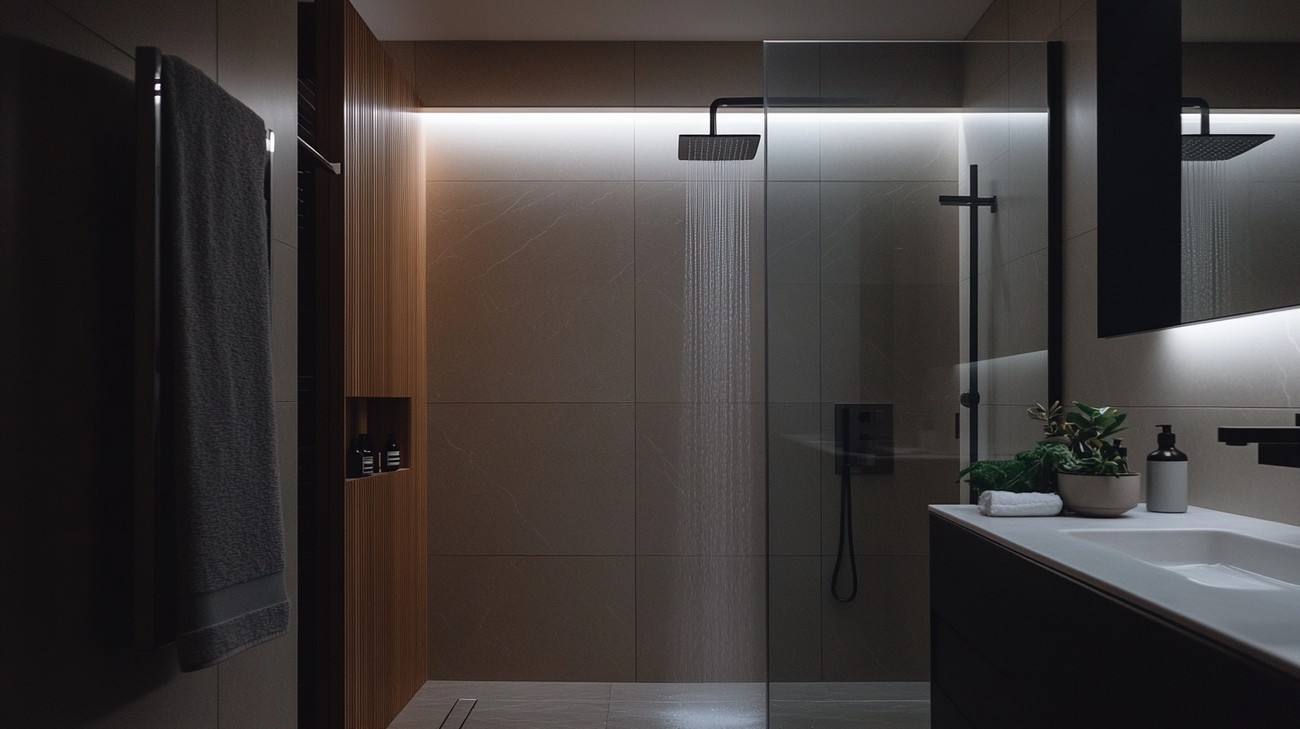
Frequently Asked Questions about Shower Diverter
What Are the Different Types of Shower Diverters?
There are mainly three types of shower diverters - the three-valve diverter, the two-valve diverter, and the tee diverter. The tee diverter is a single valve mounted in the tub spout. A two-valve diverter can be found at the center of a two-tap faucet while a three-valve diverter is usually found in older homes and they are placed between the taps of a two-tap faucet.
How Do I Know if My Shower Diverter is Broken?
If your showerhead leaks while the bathtub faucet is running, it's a sign your shower diverter might be malfunctioning. A drop in water pressure might be also an indicator of a faulty diverter. If the diverter is unable to fully divert the water to the showerhead, it needs to be replaced or repaired.
How Do I Replace a Faulty Shower Diverter?
Replacing a shower diverter involves removing the existing faucet handle and spout, disconnecting the old diverter, and installing a new one. Remember to turn off your home’s water supply before starting. It's worth mentioning that some plumbing experience can be advantageous when replacing a shower diverter, especially in older homes.
Can You Repair a Shower Diverter Instead of Replacing it?
Yes, in many cases, you can repair the shower diverter without replacing it. If the issue is attributed to a damaged washer or seal within the diverter, you can replace these parts themselves without needing to replace the entire diverter.
How Often Do I Need to Replace My Shower Diverter?
The need to replace your shower diverter depends on the quality of the diverter, water quality, and how well it's maintained. Typically, a well-made shower diverter should last well over a decade before needing replacement.
Can a Leaky Shower Diverter Cause Damage?
Yes, a leaking shower diverter can cause damage. Besides wasting water, if left unchecked, it can lead to mold and mildew, damage your bathroom fixtures and flooring, and even cause structural damage to your home in severe cases.
Is There a Difference Between a Shower Diverter and a Shower Valve?
Yes, there's a difference. A shower valve controls the flow and temperature of water in your shower, while a shower diverter redirects the water from one outlet to another.
Do I Need a Plumber to Fix a Shower Diverter?
While smaller issues with a shower diverter can be fixed DIY, complex issues such as a broken valve or a leak that requires replacing components may require the services of a professional plumber. It's always best to consider your comfort level and experience when dealing with plumbing tasks before deciding on a DIY repair.
How Can I Maintain My Shower Diverter in Good Condition?
Simple steps to maintain your shower diverter include regular checks for leaks, cleaning the diverter regularly to remove soap scum or sediment that could affect the diverter’s functionality, and promptly fixing or replacing worn out components.
Which Shower Diverter is the Best?
Choosing the best shower diverter ultimately depends on personal preference and the existing plumbing of your bathroom. You might prefer the simplicity of a tee diverter or the separation of controls offered by a three-valve diverter. Always consider the compatibility of the diverter with your present shower and tub setup before making a choice.

Pros of Shower Diverter
Efficient Water Usage
One of the primary advantages of a shower diverter is its ability to help conserve water. Shower diverters can effectively regulate water flow between the faucet and the showerhead. This feature ensures that water isn't wasted when the shower isn't in use, reducing overall household water consumption.
User-Friendly Interface
Shower diverters are generally user-friendly in nature. Most come with easy-to-understand instructions for installation and usage, making them accessible to homeowners without extensive plumbing knowledge. Even if professional installation is required, future use of the diverter is typically straightforward, with users simply flipping a switch or turning a knob to switch water flow.
Installation Process
Shower diverters are often easy to install. Those who are handy enough can often manage the installation themselves, without having to call a professional plumber. Many shower diverters come in kits with all necessary components, simplifying the process further.
Cost-Effective
As compared to other plumbing devices, shower diverters are relatively cost-effective. They are often less expensive than installing a separate bathtub faucet and showerhead, saving homeowners on initial investment costs.
Variety of Styles
Shower diverters come in a myriad of styles, allowing users to find a design that best fits their bathroom decor. This factor might seem trivial in the overall functionality of the divergence, but it counts a lot in playing a role in enhancing the overall look of the bathroom.
Cons of Shower Diverter
Potential Leaks
One disadvantage associated with shower diverters is the potential risk of leaks. Over time, shower diverters can become old or faulty, which can lead to water leaks. These leaks can cause damage to your bathroom, induce mold growth, and could potentially jack up your water bill due to waste.
Difficulty in Handling
While user-friendly, shower diverters can sometimes be complicated to operate for those unfamiliar with its workings. A user can struggle between maintaining a balance with the water flow between the taps, the showerhead, and the tub filler.
Potential for High Repair Costs
While the initial cost of a shower diverter may be comparatively low, the repair or replacement costs can be high. If the diverter fails or breaks down, the overall replacement costs also include removing and replacing the tiles or wall where the diverter is installed, which could add up to a costly repair.
Limited Flow Rate
Another potential downside to shower diverters is their impact on water flow rate. Some users may find that the water flow is less powerful when the diverter is in use. This can make for a less satisfying shower experience, particularly for those who prefer higher water pressure.
Requires Regular Maintenance
Like any other aspects of your plumbing, regular maintenance is required to ensure it's functioning effectively. If ignored, buildup can occur causing problems with its capability to properly switch the flow of water.
Overall, while shower diverters present notable conveniences, there are potential downsides that need to be considered. Depending on individual circumstances and needs, these cons might overpower the pros or vice versa.

Myths and Misconceptions about Shower Diverters
Myth: A Shower Diverter is Always Necessary
A common misconception about shower diverters is that every bathroom shower setup needs to have one. While these fixtures are indeed essential in some cases, there are scenarios where you may not require one. For example, if you have a standalone shower, you probably do not require a diverter as the water only has one route to follow. Shower diverters are traditionally necessary in setups where there are multiple outlets, such as in a shower-tub combo, where the diverter directs water either to the faucet or to the showerhead.
Misconception: All Shower Diverters Are The Same
Standard Diverter
People often believe that all shower diverters are the same, which couldn't be further from the truth. The standard shower diverter is a type that people typically think of, which is a pull lever located on the tub spout.
Three-Valve Diverter
One type of diverter is the three-valve diverter. This diverter has three controls - one for hot water, one for cold water, and another for directing the flow between the showerhead and tub faucet. They’re usually found in older homes with a two-tap system.
Two-Valve Diverter
The two-valve diverter is also quite common. It directs the flow of water between the tub faucet and the showerhead and controls the water temperature as well. They’re typically found in the middle of a single-handle faucet setup.
Each type of diverter has its own installation process, maintenance needs, and potential issues. Understanding the kind of diverter you have can help troubleshoot any problems that may arise.
Myth: A Failing Shower Diverter Means I Need A New Shower System
A prevalent myth about shower diverters is that if yours begins to fail—for example, it's not appropriately directing water flow—then it means you need to entirely replace your shower system. This belief can lead to unnecessary worries and unwanted expenses.
The truth is, in many cases, you only have to replace or repair the malfunctioning diverter. In fact, even a complete diverter replacement is often a quick and inexpensive project. If the diverter is merely blocked with mineral deposits, a cleanup often fixes the issue.
Misconception: Installing or Replacing a Shower Diverter is Always a Job for Professionals
While it's true that complex plumbing tasks should be left to professionals, shower diverter installation or replacement can usually be performed by anyone possessing basic DIY skills. Of course, if you're uncomfortable with the task or can't quite pinpoint the issue, it's always wise to call a professional.
However, if you're feeling handy, replacing a shower diverter involves merely unscrewing the current diverter and replacing it with a new one, usually without special tools or much physical effort.
It's essential to know, however, that the process can be slightly different depending on the type of shower diverter at hand. So, it's crucial to research or consult an expert for specific instructions.
Myth: A Leaky Shower Diverter is a Minor Issue
A prevalent misconception about shower diverters is thinking that a small leak isn’t a big deal. The fact is, however, even a slight leak can lead to severe problems down the line. A leak wastes water and can drive up your water bill over time. More importantly, the moisture from the leak can potentially damage your bathroom over time – it could result in loose tiles, water stains, and in severe cases, structural damage due to rot. Therefore, handling leaks promptly is advisable.
In sum, myths and misconceptions about shower diverters can lead to misinformed decisions regarding these crucial bathroom components. Understanding the actual facts can help you maintain your system properly and solve problems effectively.
Summary
So, that's about everything you need to know about the good old shower diverter. Isn't it just interesting how people often overlook these small things, when in reality, they significantly contribute to our daily comfort? This little device gives us the convenience to switch between a bath and a shower, ensuring we can select the right option based on convenience and preference. Remember to take care of them, as any issues could lead to bigger problems like water leaks or insufficient water pressure. In essence, it'd be hard to imagine our showers without the humble shower diverter.
You've now learned that a shower diverter plays a bigger role than most of us imagine. It may be small, but it has an immense job, directing the flow of water where we want it. Just imagine if we didn't have this device, showers would be so much messier! So, next time when you're relishing your warm shower or a refreshing bath, think about the little shower diverter that makes it all possible. Lastly, remember a well-functioning diverter ensures you have a pleasurable experience each time you step into your bathroom.
Finally, it’s safe to say that our modern conveniences are in part due to the ingenious invention of the shower diverter. It's this little device that lets us enjoy both a shower and a bath in the same space. So, a shower diverter is more than just a luxury. It’s a practical device that serves to bring you comfort and ease during your daily routine. So, the next time your family or friends complain about switches or valves in their bathroom, you'll already know that it's likely the unsung hero, the shower diverter, at work.
About KYPD Plumbing
KYPD Plumbing is your friendly neighborhood go-to in Lexington, KY for all residential and commercial plumbing needs. We’ve been tackling everything from pesky leaks to major installations since we opened our doors. Through a strong commitment to our core values, we've earned our reputation as dedicated problem solvers. Whether you have a small issue or complex project, we offer competitive prices while always delivering top-quality work. We’re KYPD Plumbing - ready to serve and proud to be part of the Lexington community.
Tags: bathroom, plumbing, shower head,

